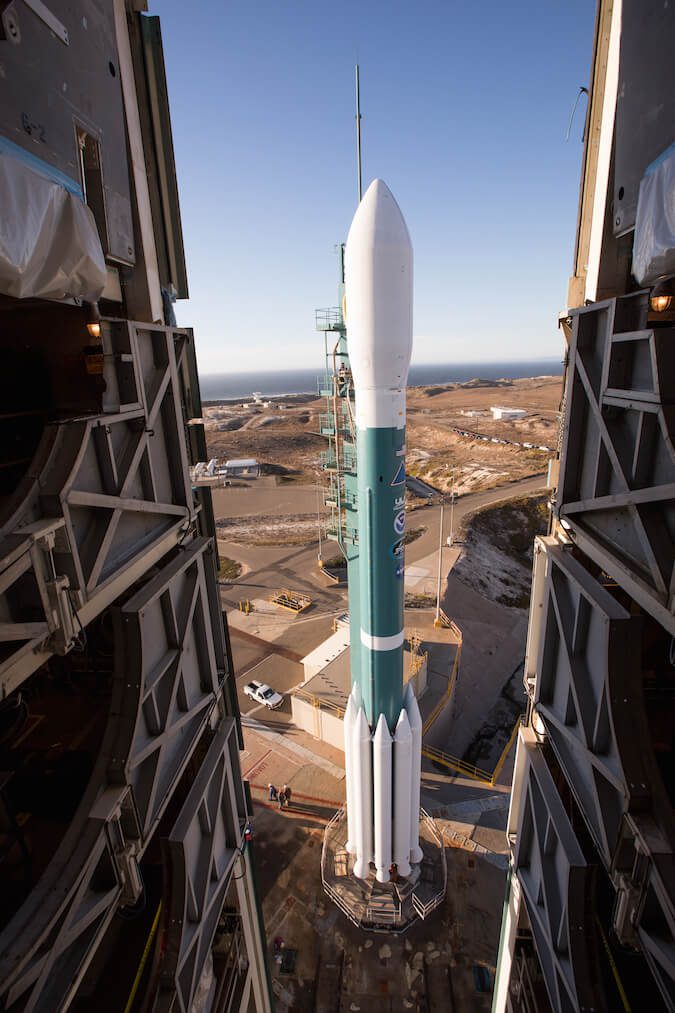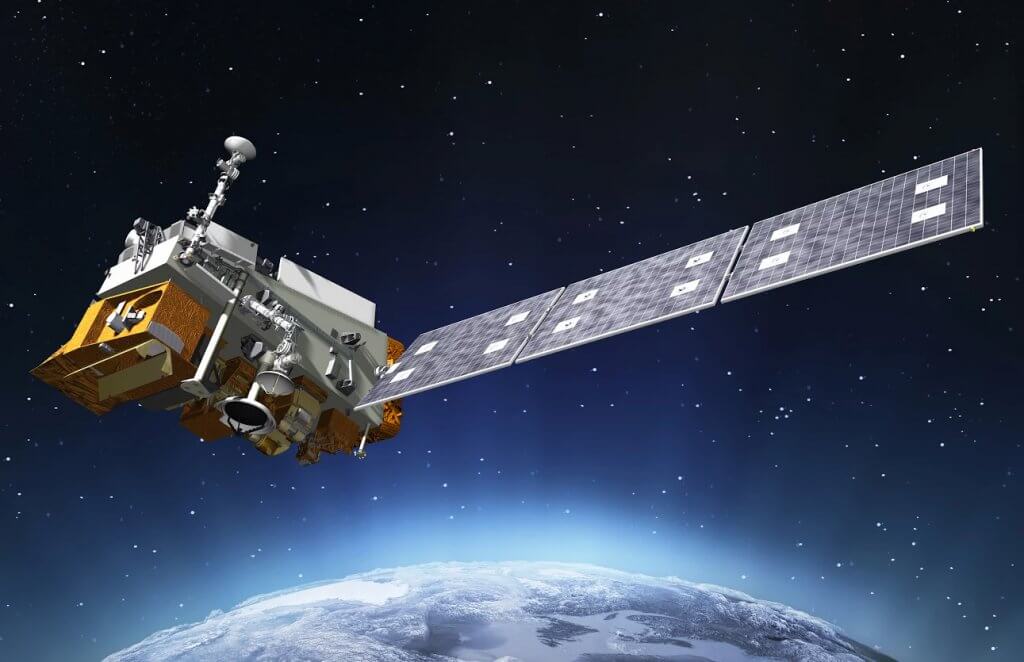The penultimate Delta II rocket launch was used to lift the 2,294kg Joint Polar Satellite System-1 (JPSS-1) meteorological satellite into orbit. The United Launch Alliance launch to a 800km Sun-synchronous low Earth orbit took place from the Vandenberg launch site at 0947 GMT on 18 November 2017. The JPSS-1 satellite, carried on behalf of the NOAA (National Oceanic and Atmospheric Administration) and NASA, will be renamed NOAA-20 when it comes into full operation. It is reportedly valued at US$1.6 billion.
Built by Ball Aerospace, the JPSS-1 spacecraft carries the Raytheon-built Visible Infrared Imaging Radiometer Suite (VIIRS). In effect, the JPSS programme became the successor to the folded US military NPOESS programme. Later the US military also pulled out of funding its Defense Weather Satellite System (DWSS) contribution to the two-satellite mission, leaving the JPSS mission as a joint NOAA/NASA two-satellite programme.

Delta II 7920-10C emerges ready for its flight. Courtesy: ULA

Artist’s impression of JPSS-1 in orbit. Courtesy: Ball Aerospace
Five cubesat spacecraft, carried on the rocket’s second stage, were ejected from three P-Pod dispensers. These included the Mirata spacecraft from MIT’s Lincoln Laboratory, which is carrying a miniaturised microwave radiometer to image weather events via temperature, water vapour and ice crystal measurements. The Makersat 0 mission of Northwest Nazarene University will monitor characteristics of different plastics in the vacuum of space, while also capturing images of Earth. RadFxSat, for Vanderbilt University, will measure radiation effects on a memory integrated circuit. The Embry-Riddle Aeronautical University’s EagleSat-1 will test bit flipping with various types of memory, and measure orbital decay rates. Buccaneer, for the Australian Department of Defence and the University of New South Wales, is testing a 3.2m deployable HF antenna, which will eventually be used for radar calibration.
A sixth cubesat, POLYSAT 7 (CP 7), used for vibrating damping experiments, had been expected to be on the flight but in the event did not fly.
The last Delta II rocket will carry ICESAT 2 and other payloads into orbit in September 2018.






